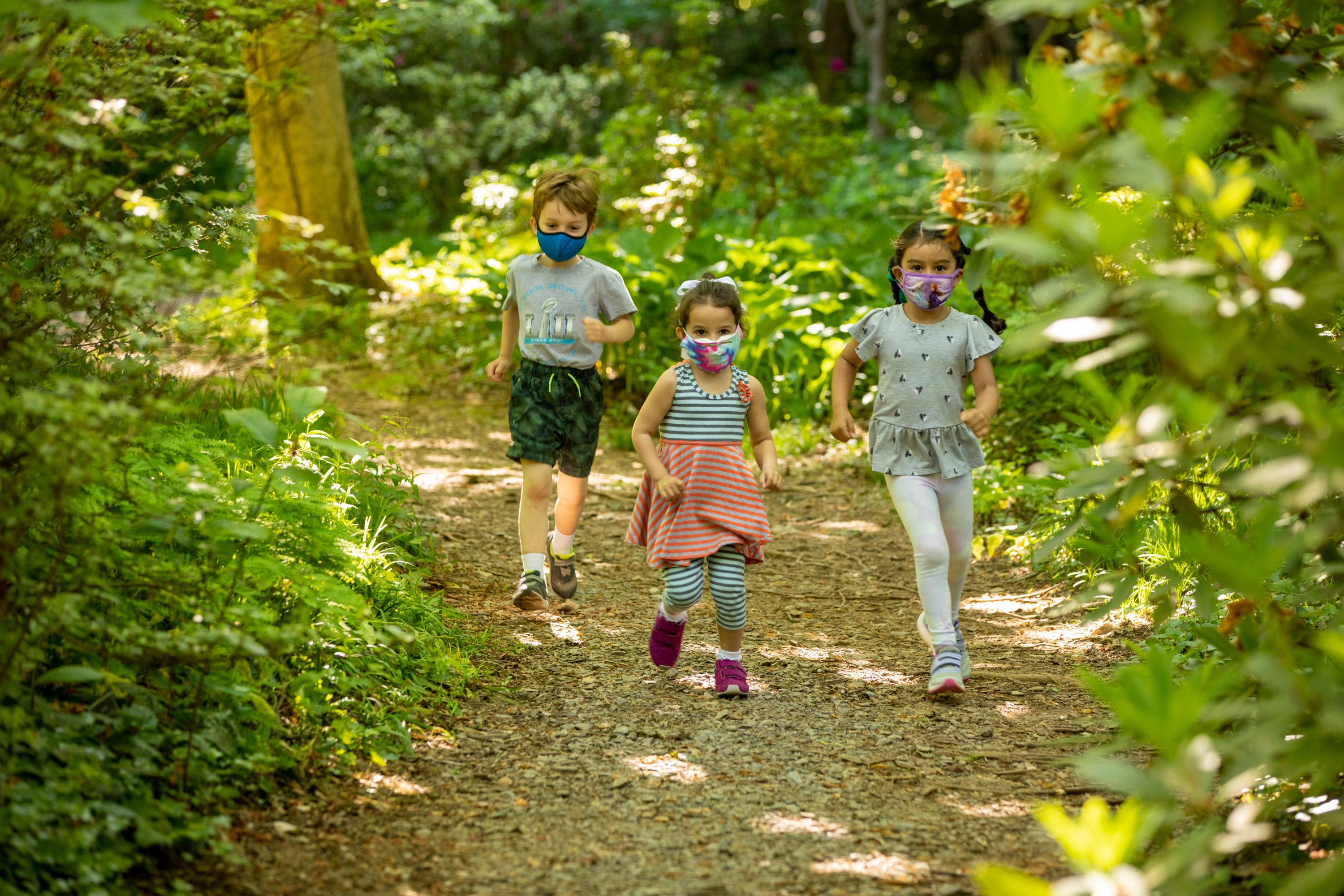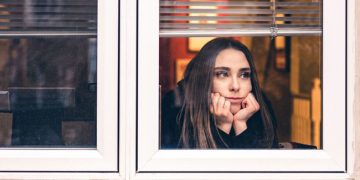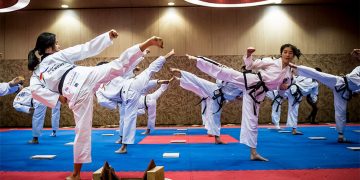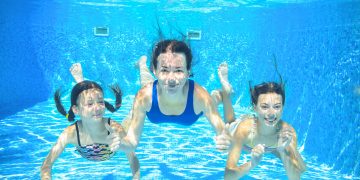Crossway Montessori in Kensington once worked like an ordinary Montessori preschool—generally, the youngsters remained inside for illustrations, heading outside for breaks.
Then, at that point, came Covid. The school—expecting to resume for face to face instructing yet to protect children and staff—recruited a scene plan firm to reexamine its half-section of land grounds.
At the point when youngsters show up every day at what’s presently called Crossway Montessori Forest School, they first accumulate in the recently planned, concealed “Glen,” situated on tree stumps (molded from a fallen tree) prior to spreading out for the afternoon. Maybe they’ll watch out for the chickens in the new coop, snatch craftsmanship materials from the extended horse shelter, plunge into a book in the new outside understanding alcove, or head to the nursery to really focus on the vegetables and blossoms. After lunch in the open air bistro, they’ll settle down on beds for rests in another open-sided structure.
“We went altogether outside due to the pandemic,” says Ann Byrne, Crossway’s head of school. “At the point when we returned in June 2020, we were open air centered and nature-based. We utilize the indoor homerooms just during nasty climate.”
There was such interest this year that Crossway added grades one through three on top of its program for more youthful children.
“We see such satisfaction in the youngsters being outside,” Byrne says. “Indeed, even our staff has said they can’t envision being inside however much we were preceding this. The youngsters are so cheerful and are adapting to such an extent.”
Open air schools have been famous for quite a long time in spots, for example, Germany and Denmark—Scandinavians prefer the Nordic way of thinking of friluftsliv, or open air life. In this nation, they’ve flourished all the more as of late, propelled to some degree by a 2005 book, Last Child in the Woods, which put forth the defense for youngsters investing more energy outside. The quantity of nature-and woods arranged preschools and kindergartens in the US has more than quadrupled in the course of recent years—from 150 to more than 650—as indicated by the North American Association for Environmental Education.
A worldwide pandemic—when it’s more secure to be in natural air, however many have likewise acquired another appreciation for being outside—could make the pattern mushroom significantly more. As indicated by NAAEE, no less than 65 nature schools opened in the US throughout the last year. In the interim, Byrne says she got more calls than any other time in recent memory this previous August from guardians searching for an opening.
By the strictest definition, a nature-based school is one that is outside as well as directed by the outside. Children actually find out with regards to music, craftsmanship, and math, yet with the normal world as a brief.
“The essential reason of the nature-based instructive development is that kids are innately inspired by the regular world,” says Stephanie Bozzo, establishing overseer of the 15-year-old Audubon Nature Preschool in Chevy Chase. “We take cues from the kid concerning what they need to find out about. ‘You’re keen on the lake at this moment? You saw a dragonfly? We should discuss the existence pattern of a dragonfly.’ If, as a teacher, you can venture back and see what they need to realize, you’re not battling to show them something.”
Locally, a small bunch of schools stress nature-centered instruction, remembering Epiphany Preschool for Vienna, the Country Day School in McLean, and Takoma Park Cooperative Nursery School. (For an accessible guide of some nature preschools around here, see naturalstart.org.)
For something moderately new, open air tutoring—referred to in research circles as ecological schooling—has as of now been exposed to a woods of academic review. Analysts at Stanford University assessed 119 friend audited papers and inferred that such a schooling has a quantifiable, constructive outcome.
Examination has discovered that youngsters who invest more energy in nature improve when tried on math, perusing, and science; score higher on intellectual measures, for example, basic reasoning and critical thinking; participate in more imaginative play; coexist better with others and have more prominent self-restraint; have better confidence; are better, not so much pushed, but rather more genuinely dynamic; and even show diminished paces of myopia.
“People were outside in nature for a huge number of years before we put them in study halls,” says Julie Liddle, program chief at the Eastern Ridge School in Great Falls. “I think by drastically decreasing the measure of time little people spend in nature, there are entire encounters their creating cerebrums pass up. I don’t think boring children with worksheets is an approach to invigorate an affection for learning. Outside, they are more inquisitive.”
Openness to nature has additionally been displayed to expand center and to help those with a lack of ability to concentrate consistently scatter.

“There’s an incredible statement by Erin Kenny of Cedarsong, an outside school in Washington state: ‘Kids can’t skip off the dividers on the off chance that we remove the dividers,’ ” says Bozzo, whose Audubon school sits on a 33-section of land grounds. “For a ton of preschool teachers, this is a gigantic acknowledgment, how various youngsters are the point at which they are outside.”
Children don’t should be outside the entire day, or drenched in a nature-based educational plan, to receive a portion of the rewards. Indeed, even a touch of time outside day by day at a customary school can have an effect.
At Washington Waldorf School, the high-schoolers presently start a few days with a half hour of active work outside. “Everybody realizes that early mornings are intense for adolescents,” says Lelia True, interval top of the Bethesda school. “We found that by awakening their bodies first, we sort of wake up their psyches. That has a distinct effect for their preparation when they go in and plunk down for the scholastic part.”
Open air guidance isn’t beyond reach to kids with actual difficulties. “We’ve had youngsters who have numerous appendage removals take part in our program,” says True.
At the 140-section of land Sandy Spring Friends School in Maryland, the students—who range from pre-K through secondary school—normally went through a few hours of their day outside even before the pandemic, among sports and examples. A science class may bring forth fledglings at the lake. The criminology class may set up a “crime location” outside.
Since Covid, says head of school Rodney Glasgow, understudies might be outside much more: “Most days, except if [the climate is] unendurable, lunch is outside. A great deal of classes began joining outside things. Perhaps a conversation they’d generally have in the study hall, they go outdoors. The lower school had a Kennedy Center show truck do an entire exhibition with the children situated outside.
“We saw such harming impacts from when children were isolated inside,” Glasgow says. “So [with] the mix of coming to school with kids their own age and having the option to be outside securely, I saw more delight and unwinding. It was tangible.”
As of late, numerous conventional schools have made nurseries where understudies may go through piece of the day. During the pandemic, a few schools raised tents so classes could be in natural air. Others thought outside the tent.
The Woods Academy, a Catholic school in Bethesda, had been arranging an outside study hall for a very long time—and facilitated a pledge drive in March 2020, seven days before Covid shut down face to face learning. “Much to our dismay,” says head of school Joseph Powers, “that this would be something we’d use rather soon.”
The Outdoor Learning Lab, as it’s called, highlights a little cascade, downpour barrels, a contemplation alcove, and a tangible nursery. For classes, understudies can sit on wood pillar amphitheater seating; overhauled wi-fi implies there’s a sign. The space has been utilized for perusing, little gatherings, music classes, and STEM tests.
Science instructor Megan Mullally began taking her fifth-and 6th graders to the open air lab when it was done the previous spring. “In my 5th grade class, we have a unit on water cycle and pollinators,” she says. “We burned through one entire period outside standing by to notice pollinators. We had the children lying on the ground, and we could see honey bees’ tongues sucking out dust. That is the calmest I’ve at any point seen them. It was not something I might have done inside.”
Mullally, who takes her understudies outside any risk she gets—for instance, to shoot bottle rockets to get movement and speed increase—says they’ve been especially anxious to go out during the pandemic: “Their eyes light up. It gives a quieting impact. They love having the option to fan out, accomplish something involved, and get a break from their covers.”
While tuition based schools have more assets and adaptability to move adapting outside, state funded schools are checking out nature, as well.
“Three of my kids are in open primary school—Rock Creek Forest in Chevy Chase—and they have an open air space,” says Bozzo. “In case they’re dealing with math worksheets or perusing a story, those are so natural to do outside. Until Covid, there has been a ton of faltering, since instructors in customary schools don’t have preparing on the most proficient method to oversee kids outside. They’ll say, ‘Imagine a scenario in which one runs off?’ Children will not run off—they need to be together.”
Some DC state funded schools, like Patterson Elementary in Ward 8, are building outside learning regions. Shouldn’t something be said about schools without the grounds or assets to seed gardens or purchase tents? Exploration shows that in any event, tending plants in an indoor homeroom—any openness to nature—helps youngsters flourish.
In any case, advocates for ecological instruction stress that an excessive number of kids can’t exploit open air programs. A 2017 report from the Natural Start Alliance found that across nature-based preschools and kindergartens in the US, 83% of understudies were white.
“Unreasonably numerous disparities remain with regards to who approaches these improving projects,” says Sarah Bodor, NAAEE’s head of strategy and subsidiary relations.
One more aftereffect of ecological training: “If youngsters go gaga for nature, they grow up to secure it,” Bozzo says.
In contrast to a great deal of grown-ups, kids don’t see the value in nature simply on wonderful days. “In case kids are warm and dry—and we give broad stuff records to guardians—they like to be outside in the downpour stepping in puddles,” says Crossway Montessori’s Ann Byrne. “Grown-ups are more disposed to be indoor individuals than youngsters.”
Nature schools bring kids inside just during extreme climate, so guardians need to slather on sunscreen and bug splash, or wrap kids up, prior to dropping them off. “There is more weight on guardians,” says Eastern Ridge’s Julie Liddle. “There’s more clothing. Children return home sloppy or need to change during the day to escape wet garments. Furthermore, consistently at shower time, we urge guardians to do tick checks.”
Allowing youngsters to run and climb trees can likewise mean an incidental scratched knee.”There are very only here and there Band-Aid wounds,” Byrne says. “The possibly decide we have is that if the surface is hard, you need to walk. In any case we’re not saying, ‘Stop, don’t run!’ The children are returning home tired.”
What’s more, cheerful. “We’ve seen such improvement in the kids,” Byrne says, “we have no goal of returning to educating inside.”
























































Discussion about this post